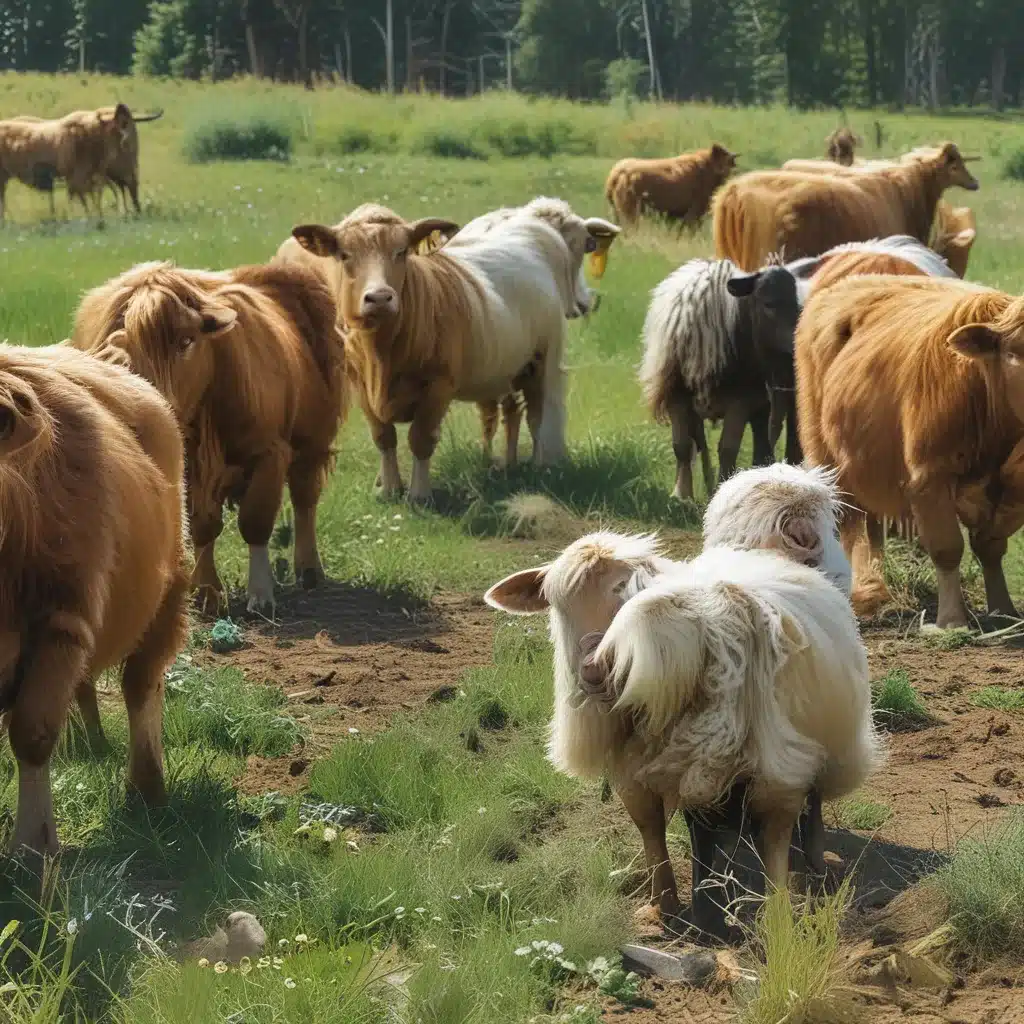
As I stepped onto the stage at the National Cowboy Poetry Gathering in Elko, Nevada, my heart raced with a mix of excitement and humility. Here I was, a city-dweller-turned-regenerative-farmer, about to share my passion for this earth-reviving movement with a room full of seasoned cowboys and agricultural enthusiasts. Little did I know, this experience would forever change my perspective on the power of regenerative farming.
Defining Regenerative Agriculture
Regenerative agriculture is more than just a farming technique; it’s a holistic approach to stewarding the land, one that works in harmony with nature rather than against it. At its core, regenerative agriculture focuses on rejuvenating soil health, restoring biodiversity, and enhancing the overall resilience of agricultural ecosystems. By harnessing the natural cycles of the earth, this transformative approach aims to create thriving, self-sustaining farms that can withstand the challenges of our ever-changing climate.
As the team at xcube LABS eloquently describes, regenerative agriculture “goes beyond sustainable farming practices” by prioritizing practices like cover cropping, crop rotation, and minimal tillage. These methods not only improve soil structure and fertility but also increase organic matter content, promote beneficial microbial activity, and enhance the land’s ability to capture and retain water.
Restoring Soil Health
Soil is the foundation upon which all life on our planet depends, and regenerative farmers understand this crucial truth. By focusing on building healthy, vibrant soils, they’re able to create an environment that supports thriving ecosystems, abundant crops, and resilient communities.
One of the key principles of regenerative agriculture is the importance of maintaining and enhancing soil organic matter. This is achieved through practices like cover cropping, where a diverse mix of plants is grown to protect the soil, fix nitrogen, and increase microbial activity. As Alexis Bonogofsky from the World Wildlife Fund eloquently explained, these practices “are changing agriculture from the ground up,” quite literally.
By nurturing the soil’s natural cycles, regenerative farmers can reduce their reliance on synthetic inputs, such as chemical fertilizers and pesticides. This not only benefits the environment but also leads to more nutrient-dense crops and a more robust, self-sustaining farm ecosystem.
Enhancing Biodiversity
Biodiversity is the foundation of a healthy, thriving ecosystem, and regenerative agriculture recognizes this crucial fact. By promoting diverse plant and animal species on their farms, regenerative farmers create a tapestry of life that supports natural pest control, pollination, and nutrient cycling.
One of the ways regenerative farmers enhance biodiversity is through the integration of livestock into their farming systems. As described by the team at xcube LABS, the use of rotational grazing helps “improve soil health, nutrient cycling, and overall biodiversity.” This symbiotic relationship between crops and livestock not only boosts the farm’s productivity but also contributes to the overall ecological balance.
Moreover, regenerative farmers often incorporate agroforestry systems, which blend trees, shrubs, and other perennial plants into their landscape. These diverse plantings not only provide habitat for a wide range of species but also help regulate the microclimate, prevent soil erosion, and enhance water retention.
Mitigating Climate Change
In an era where the impacts of climate change are becoming increasingly apparent, regenerative agriculture stands as a powerful solution to combat this global challenge. By focusing on practices that sequester carbon and improve soil health, regenerative farmers are playing a vital role in mitigating the effects of climate change.
As the xcube LABS team explains, regenerative agriculture’s “carbon sequestration potential aids in mitigating climate change by reducing atmospheric carbon dioxide levels.” This is achieved through the increase in organic matter content, which serves as a natural carbon sink, trapping greenhouse gases and storing them within the soil.
Furthermore, the water-retention capabilities of regenerative farming practices help mitigate the impact of droughts and extreme weather events, making farms more resilient in the face of a changing climate. By working in harmony with nature, regenerative farmers are not only healing the land but also contributing to a more sustainable and resilient future for all.
Economic and Community Benefits
While the environmental benefits of regenerative agriculture are undeniable, this approach also offers significant economic and community-based advantages. By reducing input costs, increasing crop productivity, and improving overall soil health, regenerative farmers are able to enhance the long-term viability and profitability of their operations.
As the team at xcube LABS points out, “Reduced input costs, increased crop productivity, and improved soil health improve farm profitability and resilience against market fluctuations.” This, in turn, helps build more sustainable and resilient rural communities, where farmers can thrive and consumers can access locally-grown, nutrient-dense foods.
Moreover, the focus on community-supported agriculture (CSA) services, like Thornappple CSA, further strengthens the bond between farmers and the communities they serve. By providing fresh, seasonal produce directly to their members, these CSAs not only support local agriculture but also foster a deeper appreciation for the land and the people who steward it.
A Journey of Discovery
As I stood on that stage in Elko, sharing my experiences as a regenerative farmer, I couldn’t help but feel a profound sense of connection to the land and the people who call it home. The cowboys and agricultural enthusiasts in the audience nodded in understanding, their weathered faces reflecting the wisdom that comes from a lifetime of working the soil.
In that moment, I realized that regenerative agriculture is not just a farming technique; it’s a way of life, a deeply rooted connection to the rhythms of the earth. It’s a journey of discovery, where we learn to work in harmony with nature, to restore balance, and to build a future that nourishes both our bodies and our souls.
As I look towards the horizon, I see a world where regenerative farming techniques are the norm, where healthy soils, thriving ecosystems, and resilient communities are the foundation upon which we build a more sustainable future. And I’m honored to be a part of this transformative movement, one that is restoring the delicate balance of our planet, one farm at a time.



